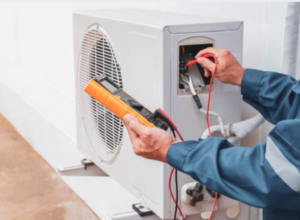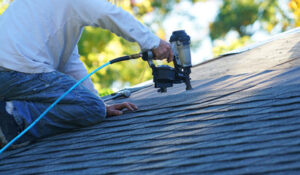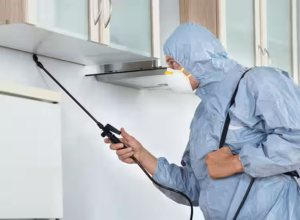A child is ready for potty training when he or she shows interest in using the toilet. Children usually start showing signs for potty use at 18 months.
Some parents try rewarding their child with stickers, extra sweets or toys when they get on the potty. However, this can backfire. Read on Rent Potty for more information.

1. Let Your Child See You Use the Potty
When your child is ready to use the potty, show them how to do it. Give them a chance to imitate you and ask them to sit on the potty in their clothes, too (if you’re using an actual toilet, make sure they are securely seated with a potty seat). It helps when they see their parents, siblings or even grandparents do it so they don’t feel embarrassed or discouraged if they have an accident.
Once they are comfortable with the process, encourage them to use the potty whenever you see that they might need to go. This might include taking them to the bathroom right after they wake up, before and after meals, before and after going outside, and in between different playtime activities.
Also, remind them to put on clean pants and underwear after they finish peeing on the potty and to flush it when they’re finished. If you notice them holding back on pee a lot or have frequent accidents, talk to your doctor because regressions can be signs of medical issues.
Avoid negative language about the potty or poop when talking to your toddler; this will only discourage them and make them more resistant. Instead, try to use simple, straightforward words like “pee” and “poop.” Point out that other family members, such as pets, do the same thing to help normalize the process for your child. Eventually, they’ll learn to recognize their body’s cues and will start going on their own. This will save you a lot of time and effort, too!
2. Make the Potty a Part of Your Routine
Encourage your child to sit on the potty chair or toilet at regular times throughout the day, ideally when they are naked. Explain what they are doing and talk about the potty with them. Many children will want to go to the potty on their own after some time and this is fine – they have learned it’s important, and you have encouraged them!
Some children may need a reminder to go to the potty, but remember that forcing them can be distressing. Instead, try saying, “If you need to poop or pee in the potty, let me know. Okay?”
Schedule sitting on the potty at key times in your child’s day, like after every meal, and before naps and bed. Many parents find that if they take their child to the potty at these times, they are less likely to have accidents.
It’s also helpful to teach your child what to do when they have to poo or pee on the potty, by asking them to say ‘wee’ and ‘poo’ when they are feeling it. Teaching them these words will help them learn to control their bladder and bowel movements on their own.
When your child uses the potty, it’s important to praise them and show excitement for their success. This will give them confidence and encouragement to keep going on their own. However, if your child has an accident, don’t punish them or be disappointed in them. It is a normal part of the learning process and showing disappointment will set them back. It is also a good idea to talk to your children’s other caregivers, such as grandparents or babysitters, about your potty training strategy so that everyone will be on the same page.
3. Encourage Your Child to Speak Up
Children who are able to communicate their needs and wants are less likely to have problems with toilet training. For example, some children who have been trained can regress and start having accidents again during times of stress such as the birth of a sibling. If this happens, talk to your child’s doctor.
One way to encourage kids to speak up is to involve them in family decisions that they can contribute to. For example, ask kids for their opinions when deciding what to do on the weekend or let them pick out storybooks at the library. Giving them these opportunities to communicate their opinions will help kids feel like they have a voice and that it matters.
Another way to encourage your child to speak up is to make sure they have a comfortable and inviting place to go to the potty. For example, decorating their bathroom with their favorite characters or colorful artwork may make it more inviting to keep going to the potty. Also, keeping a consistent potty routine and celebrating small successes can help motivate your children to keep going.
Finally, making a potty time fun by reading books together or having them play with toys on the potty can make it an exciting part of their day. Many children are afraid of the potty because they think it’s dirty or that they will make a mess, but if you set a positive tone and make it fun they will become more interested in going to the potty.
You can also try using the method of graduated guidance by bringing your child to the potty at regular intervals, such as first thing in the morning and after meals and naps. This will help them learn to recognize the signs that they need to go and will allow them to use the potty on their own.
4. Don’t Punish Your Child
Children who are punished for using the potty may become fearful of toilet training and stop trying altogether. Punishment also reduces a child’s desire to follow their parent’s lead, which is the main motivation for taking this big leap.
Similarly, don’t punish your child for having accidents or for wetting or soiling their clothes. This can make a child hesitant to use the potty and it can also cause resentment towards their parents. Instead, be calm and reassuring when your child has an accident. Explain that everyone has wet or soiled pants from time to time and encourage your child to come clean.
Also, don’t try to bribe your child with food or candy to get them to use the potty. This can lead to unhealthy eating habits later in life and can also reinforce the idea that there are certain foods that are “good” or “bad.” It’s best to stick to praise when your child uses the potty.
If your child doesn’t want to sit on the potty, try reading to them or letting them play with a toy while they are there. For many kids, this is the key to overcoming their resistance. Then, they’ll be ready to start toilet training again. If your child is still resistant, talk to your doctor. It’s possible that they have a medical condition, like urinary tract infections or constipation, that could be contributing to their issues. Your doctor can help diagnose any underlying problems and provide you with helpful tips on how to address them. They may recommend starting with a diaper and gradually moving to using the potty without one. Also, they may recommend changing your routine to include sitting on the potty first thing in the morning and right after naps.
5. Be Patient
Children need patience during the potty training process. They must be taught that it is normal to have accidents. They also need to be encouraged to keep trying and not be discouraged by temporary setbacks that occur for a variety of reasons, including lack of readiness, anxiety or stress, and illness. Parents who are patient will find that their child is able to use the potty more quickly and successfully than those who become frustrated or impatient.
If your child is displaying the signs that they are ready to begin toilet training, such as staying dry for long periods of time, recognizing when their diaper is wet or full and wanting to be changed, refusing to wear pants and preferring to sit in underwear, then it may be time to make the switch from diapers. You should have a potty chair in their room or other part of the house and make regular trips (“practice runs”) there while they are fully clothed, especially after waking up and after meals.
When you start toilet training, it is helpful to offer rewards (stickers or other prizes) for success on the potty. However, be careful that you don’t overuse this strategy as your child may come to expect rewards for just about everything they do! In addition, some research suggests that using rewards can actually slow the progress of toileting because it gives the child a wrong message about what they need to do in order to earn a reward.
Once your child is successfully using the potty, they will want to wear big kid pants outside of the home and be independent of their diapers. Be sure to take the potty with you on outings so your child gets experience being diaper free in other places. Also, be sure that all of your family members and caregivers are on the same page regarding how to handle toileting with your child – consistency is important!








